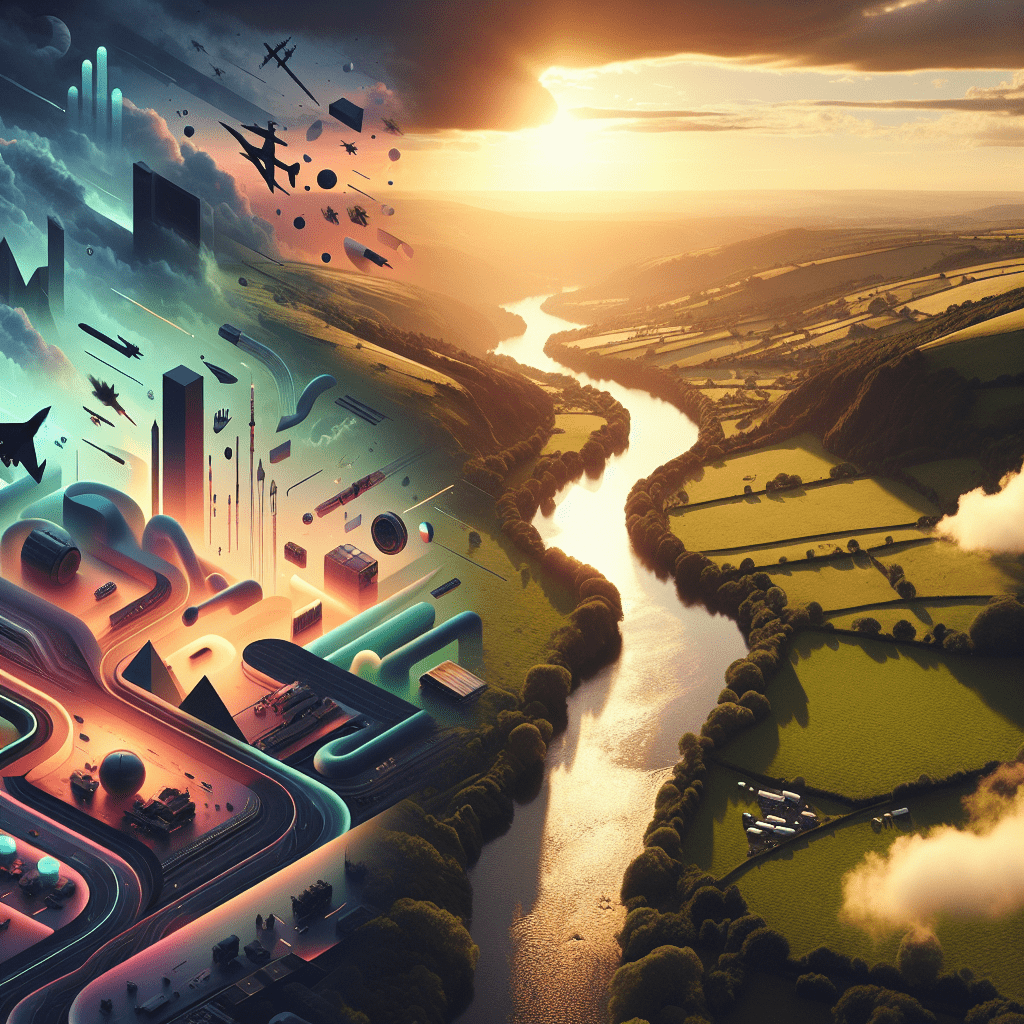Landscape Photography Settings for Stunning 4K UK Drone Shots
In This Article
- Always calibrate your Aero 3 Lite before each shoot to achieve accurate and vibrant results.
- Use aperture settings between f/8 and f/11 for the sharpest landscape imagery.
- Maintain ISO between 100–400 to avoid digital noise in UK’s variable light conditions.
- Use shutter speeds based on your movement needs — freeze or embrace it deliberately.
- ND filters are a must-have to balance exposure during bright aerial sessions.
- Golden hours offer magical lighting — schedule shoots accordingly.
- Shoot RAW and post-process carefully for publication-ready outcomes.
- Manual settings infinitely improve creative and technical control.
- Save settings presets for efficiency and consistency in future projects.
Camera Calibration: Get to Know Your Aero 3 Lite
Why Calibration Matters Before Flight
Before you even take off, getting familiar with your Aero 3 Lite’s internal settings and performing a proper calibration is the foundation of capturing flawless shots. Landscape Photography Settings begin here because any misalignment in gimbal orientation, GPS stabilisation, or compass calibration will result in skewed horizons, drift, or exposure errors. Always ensure firmware is up to date and sensors are properly aligned. This preparation ensures accurate colour rendering, cleaner detail capture, and better responsiveness from every movement of your drone, which is especially crucial when shooting the varied terrains of the UK. Leverage the drone’s calibration features accessible via the Aero 3 mobile app to fine-tune your sensors before every major shoot, especially in different geographic regions.

Optimal Aperture Range for UK Landscapes
Understanding f/8 to f/11 for Sharpness
The aperture setting is arguably one of the most critical components of your Landscape Photography Settings. When photographing the iconic rolling hills of the Yorkshire Dales or the dramatic coastlines of Cornwall, you need edge-to-edge sharpness to recreate the depth of field accurately. The Aero 3 Lite’s lens performs optimally around f/8 to f/11 — this sweet spot helps reduce chromatic aberration and distortion while ensuring maximum image sharpness. At f/8, you maintain a versatile balance between light intake and clarity, while f/11 deepens focus and is excellent for wide, cinematic shots. Avoid going beyond f/11 as diffraction may soften the image. Whether you’re shooting in bright daylight or during overcast moments, aperture control is a must for professional-grade landscape photography.
“Shooting at f/8 on the Aero 3 Lite changed the game for me — the landscapes started popping with lifelike clarity and rich contrast.”
Best Shutter Speeds for Aerial Landscape Motion
Understanding shutter speed is paramount when utilising Landscape Photography Settings, particularly for aerial drone photography with the Aero 3 Lite. When the drone is airborne, it’s always in subtle motion, even in ideal wind conditions. To reduce blurring, especially while filming moving water, flowing rivers, or windy meadow scenes, opt for shutter speeds between 1/100 to 1/250. This range captures adequately lit conditions while freezing any unintended motion blur due to drone movement or breeze-related shifts.
If you wish to embrace motion, like silky long exposures of coastal tides or car trails through moorlands, slower shutter speeds like 1/30 or longer can be employed — but only when paired with ND filters and in extremely stable air conditions. Always enable histogram display in your camera settings to monitor exposure levels, ensuring your highlights don’t get clipped mid-air. When chasing sharp imagery, remember that fast doesn’t always mean better – it’s about choosing the right speed for the subject and scene.
ISO Settings for Noise-Free UK Country Scenes
Maintaining a low ISO count is essential in achieving pristine images, making ISO control an indispensable part of your Landscape Photography Settings toolbox. The Aero 3 Lite supports a native ISO range starting at 100, ideal for daytime shooting in the strong diffuse light commonly found in the UK’s outdoor environments. An ISO of 100 to 200 is optimal when filming wide-open sunny fields, rugged cliffs, or high-altitude moorlands. Low ISO reduces noise and retains maximum image fidelity, making each blade of grass or rock detail pop with definition.
During darker moments such as twilight or overcast mornings in the Lake District, gently increase ISO to 400 or at most 800. Always try to favour lowering ISO over altering the aperture or shutter speed too drastically. High ISO values invite grain, particularly evident when unlocking image details in post. Using manual ISO settings rather than relying on automatic adjustments provides consistent and cleaner results — a critical professional trait, especially when batch processing images for clients or portfolios.
Using ND Filters for Balanced Exposure
Neutral Density (ND) filters are crucial in regulating light without adjusting core camera settings. When choosing Landscape Photography Settings, ND filters help maintain ideal aperture and shutter speed combinations under bright conditions. For the Aero 3 Lite, installing a high-quality ND4, ND8, or ND16 filter depending on sunlight intensity permits motion-friendly shutter speeds without overexposure.
For instance, when filming sweeping countryside footage at midday, an ND8 filter allows you to keep a shutter speed of 1/120 while retaining the natural vibrance and richness of the scene. ND filters also prevent blown-out highlights in clouds or water reflections. This tool is non-negotiable when shooting high-contrast environments such as Snowdonia’s ridges or oceanic cliffs along Pembrokeshire.
Keep an ND kit on hand and label your filters by strength for quick deployment. Don’t hesitate to bracket exposures with different ND levels to find the right balance for each scene.
Flight Stability and Gimbal Settings
While perfect camera settings are vital, their benefits are lost without stability. Use the Aero 3 Lite’s built-in gimbal controls to refine pitch and yaw speed for smooth transitions, particularly during cinematic movement shots. Set the gimbal mode to ‘Follow’ to keep the horizon level as your drone banks and turns. This feature plays a stabilising role in implementing your Landscape Photography Settings consistently from flight to flight.
Advanced users may zero in on motor dampening settings to reduce minute vibrations. Always calibrate your gimbal after transport as the physical jolt could misalign it. Enable the calibration tool via the Aero app and complete the process on a flat surface. Also, adopt a three-point safety check before launch: motor test, gimbal check and GPS strength confirmation. A stable drone ensures sharp frames, accurate bracketing, and dynamic video pans worthy of broadcast quality.
The Magic of Golden Hour and Time of Day
While technical settings define your shot’s precision, timing enhances its narrative. The golden hour — the hour after sunrise and the hour before sunset — is beloved by photographers for good reason. The softer, warmer light during this window amplifies texture and contrast, making fields, mountains, and clouds appear more dramatic and inviting.
Avoid shooting harshly lit mid-days unless cloud cover softens the overhead light. For dramatic shadows and serene pastels, experiment with pre-dawn blue hour and twilight periods. Pair optimal light timing with your Landscape Photography Settings (especially for ISO and white balance) to extract the maximum emotive potential from each location. In the right light, even an ordinary farmland can evoke a painterly feel. Take a moment to observe light behaviour before shooting — that single decision often elevates a good photo to greatness.
Post-Processing to Enhance Clarity
Post-production is where the initial effort blossoms into artwork. Shoot in RAW format whenever possible with your Aero 3 Lite, allowing full editing flexibility in tools such as Lightroom or Capture One. Landscape Photography Settings optimise your base capture, but fine-tuning contrast, adjusting colour curves and sharpening highlight what settings cannot capture alone.
Use de-hazing filters minimally to clear up morning fog without introducing noise. Boost shadows carefully, particularly if you’ve had to underexpose highlights using ND filters. For aerial shots, a clarity boost can dramatise topographic changes. Colour grading should complement natural hues, not exaggerate them — true professionals aim for authenticity informed by vision.
Consider profiles and LUTs (Look Up Tables) that match the Aero 3 Lite’s colour science, and create presets for consistent styling throughout similar shots. Don’t forget to remove lens distortion where evident and enable chromatic aberration correction with a single click. The smallest edits make images print- and gallery-ready.
Manual vs Auto Settings: Which Wins?
Relying on full automation risks homogenising your work. Auto settings do fine in quick missions or scouting, but for professional output, mastery lies in manual control. Custom Landscape Photography Settings provide consistency, detail recovery, and compositional intent.
Manual mode allows for deliberate choice in ISO, aperture, and shutter speed per location and time of day. Instead of letting the drone compensate incorrectly for a dark tree line and overexposing the sky, manual settings allow you to balance these tones as per artistic vision.
However, semi-auto exposures like aperture priority (Av) or shutter priority (Tv) remain useful for fast-changing scenes. Toggle between these modes during unpredictable lighting. In situations where you must use auto settings, lock exposure after auto-calculating — this prevents mid-shot light adaptations that could ruin time-lapse or cinematic movements.
Checklist: Save Your Custom Settings
Lastly, solidify good practices by saving your own Landscape Photography Settings as a reusable profile within the Aero 3 Lite’s control app. This reduces response time on location, ensures consistent output across shoots, and eliminates the risk of forgetting a crucial adjustment under pressure.
Your landscape preset should include white balance tailored to local light conditions, preferred aperture (preferably f/8 or f/11), ISO no higher than 400, ND filter adjustments, and gimbal pan speeds. Also, store specific settings as scene modes: “Seaside”, “Forest”, “Dusk” etc. Backup these profiles on the cloud or an SD card.
For a deeper look at editing workflow best practices, visit Learn more about Drone Camera Settings and Techniques. You can also read our technical breakdown of drone sensor mechanics via Read a related article. For broader photography principles that complement drone work, check out AI innovations in digital photography marketing.
Conclusion: Mastering Aero 3 Lite for Landscape Photography
[CONCLUSION_CONTENT]
Great guide on aero-3-lite-4k-best-settings-for-crisp-uk-landscape-shots – Community Feedback
What is the best setting for landscape photography?
The classic best camera settings for full-frame landscape photography are an aperture between f/8 and f/11 for maximum sharpness. Most lenses remain sharp from f/5.6 through f/16, with sharpness decreasing due to diffraction beyond f/16.
How to get crisp, sharp pictures?
To achieve the sharpest images, use a tripod, low ISO, optimal aperture (the lens sweet spot), and post-process with careful sharpening. Consider using a cable release and self-timer to minimize shake.
What setting should my camera be on for action shots?
For action shots, set your shutter speed to at least twice the focal length (e.g., 1/400s for 200mm). For fast movement, increase the shutter speed further to freeze motion and avoid blur.
What is the rule of 3 in landscape photography?
The Rule of Thirds recommends placing key elements of your photo at intersecting points of three vertical and horizontal lines, creating balanced and visually pleasing compositions.

